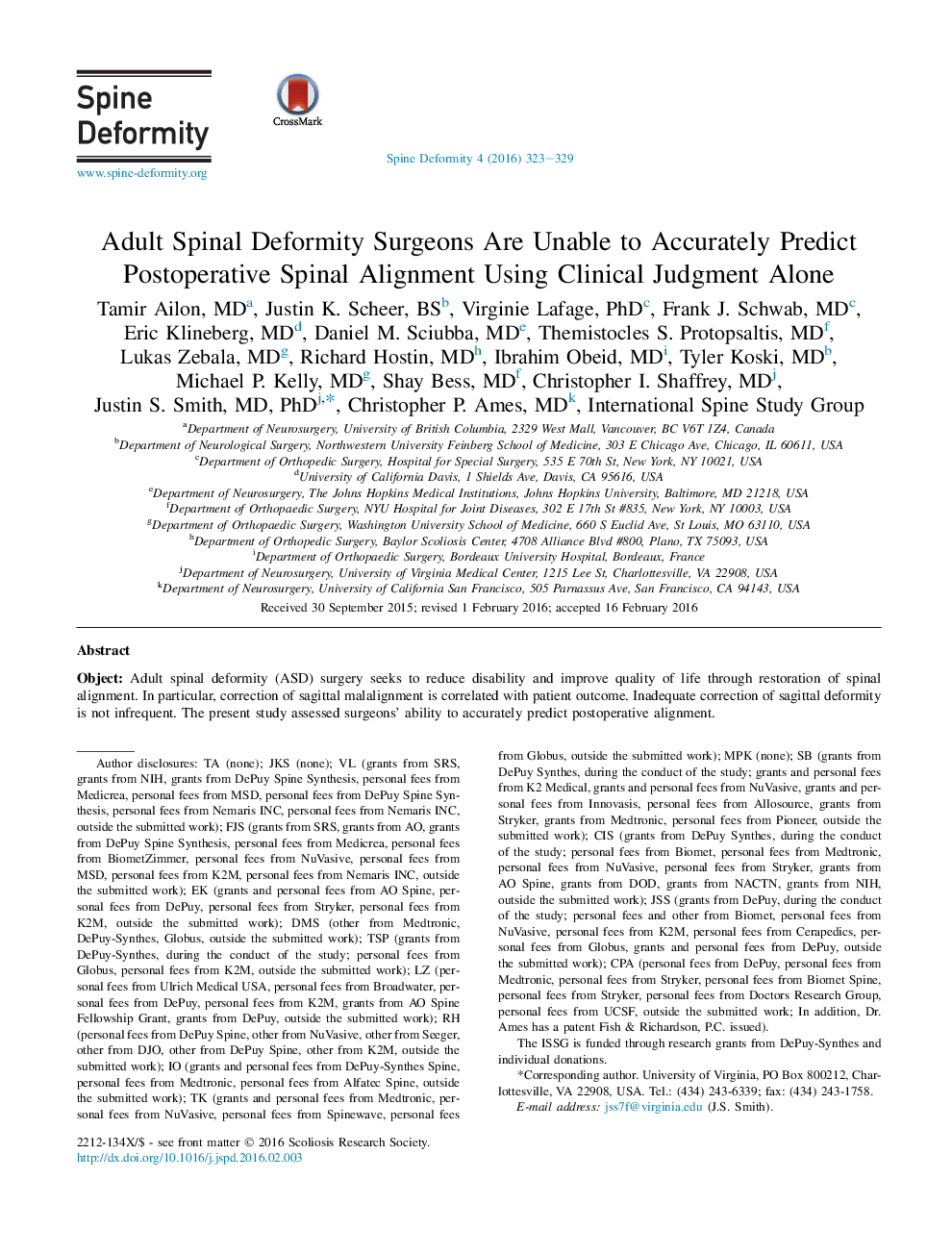| Article ID | Journal | Published Year | Pages | File Type |
|---|---|---|---|---|
| 4095336 | Spine Deformity | 2016 | 7 Pages |
ObjectAdult spinal deformity (ASD) surgery seeks to reduce disability and improve quality of life through restoration of spinal alignment. In particular, correction of sagittal malalignment is correlated with patient outcome. Inadequate correction of sagittal deformity is not infrequent. The present study assessed surgeons' ability to accurately predict postoperative alignment.MethodsSeventeen cases were presented with preoperative radiographic measurements, and a summary of the operation as performed by the treating physician. Surgeon training, practice characteristics, and use of surgical planning software was assessed. Participants predicted if the surgical plan would lead to adequate deformity correction and attempted to predict postoperative radiographic parameters including sagittal vertical axis (SVA), pelvic tilt (PT), pelvic incidence to lumbar lordosis mismatch (PI-LL), thoracic kyphosis (TK).ResultsSeventeen surgeons participated: 71% within 0 to 10 years of practice; 88% devote >25% of their practice to deformity surgery. Surgeons accurately judged adequacy of the surgical plan to achieve correction to specific thresholds of SVA 69% ± 8%, PT 68% ± 9%, and PI-LL 68% ± 11% of the time. However, surgeons correctly predicted the actual postoperative radiographic parameters only 42% ± 6% of the time. They were more successful at predicting PT (61% ± 10%) than SVA (45% ± 8%), PI-LL (26% ± 11%), or TK change (35% ± 21%; p < .05). Improved performance correlated with greater focus on deformity but not number of years in practice or number of three-column osteotomies performed per year.ConclusionSurgeons failed to correctly predict the adequacy of the proposed surgical plan in approximately one third of presented cases. They were better at determining whether a surgical plan would achieve adequate correction than predicting specific postoperative alignment parameters. Pelvic tilt and SVA were predicted with the greatest accuracy.
